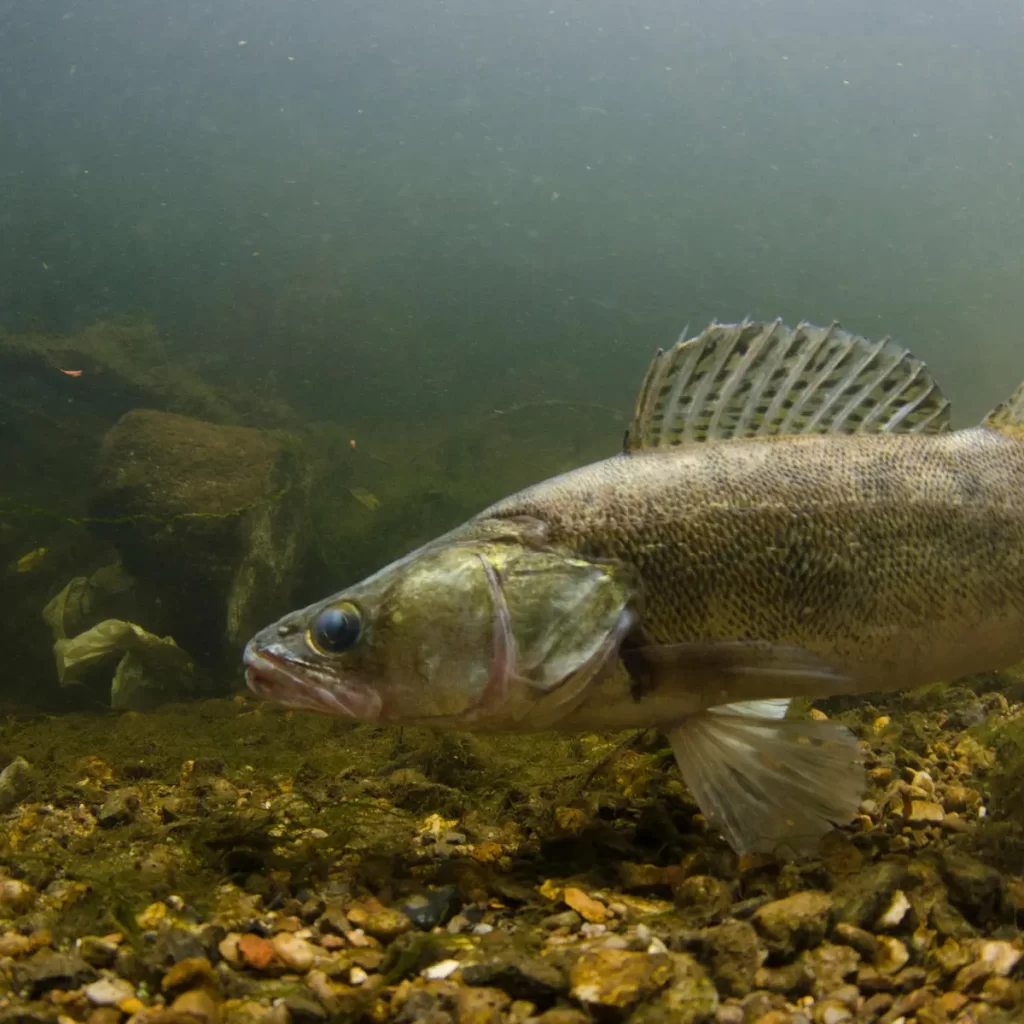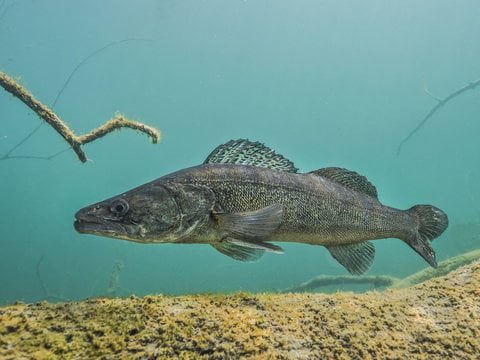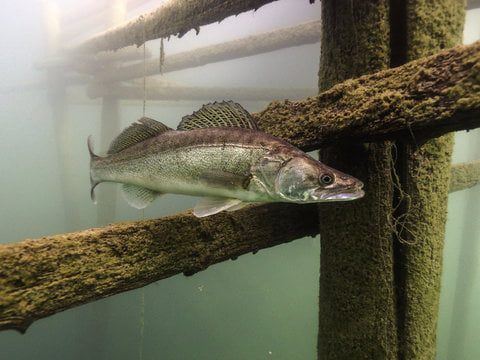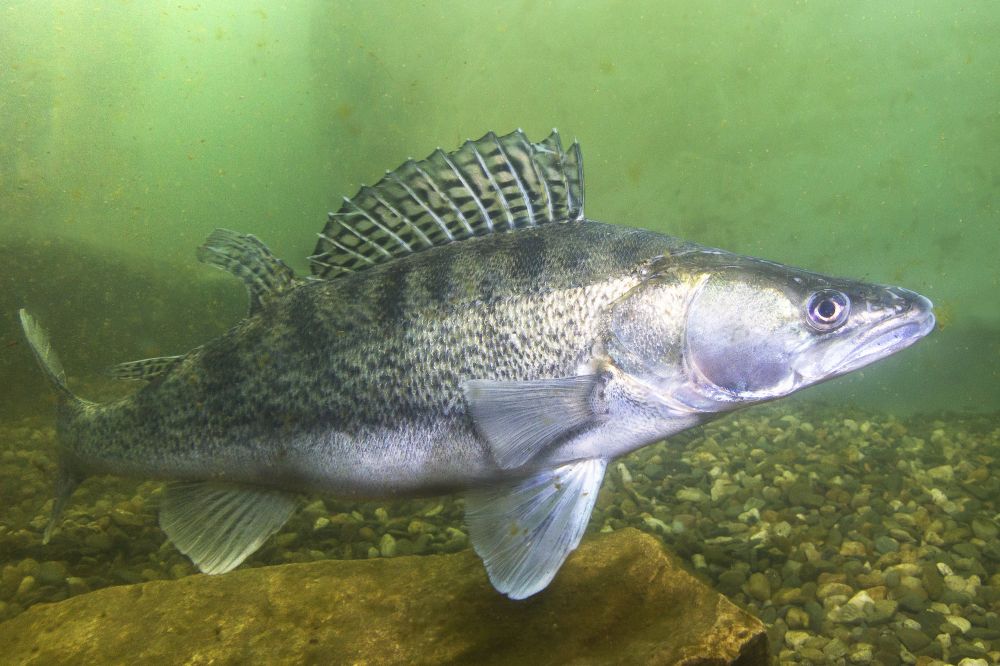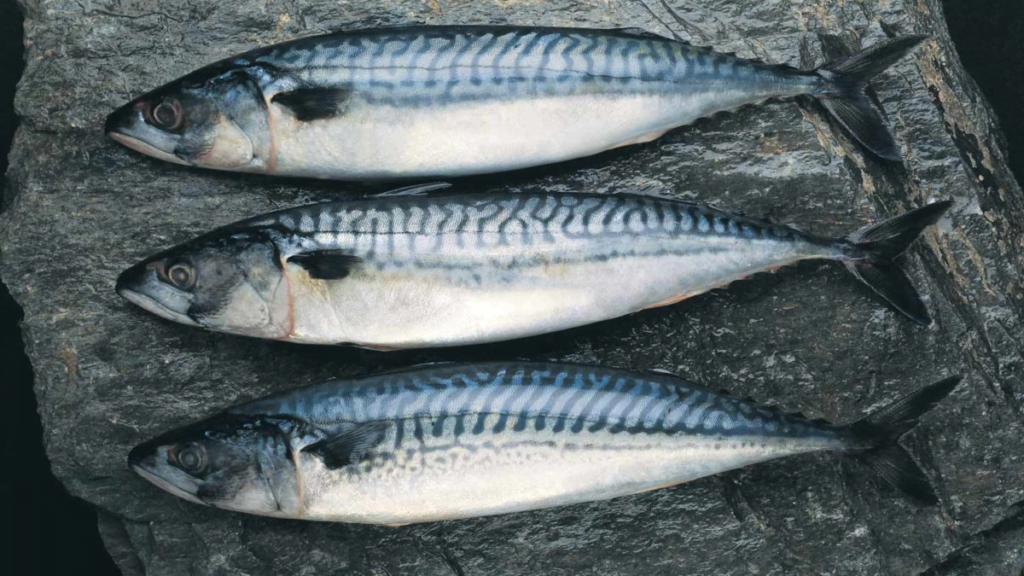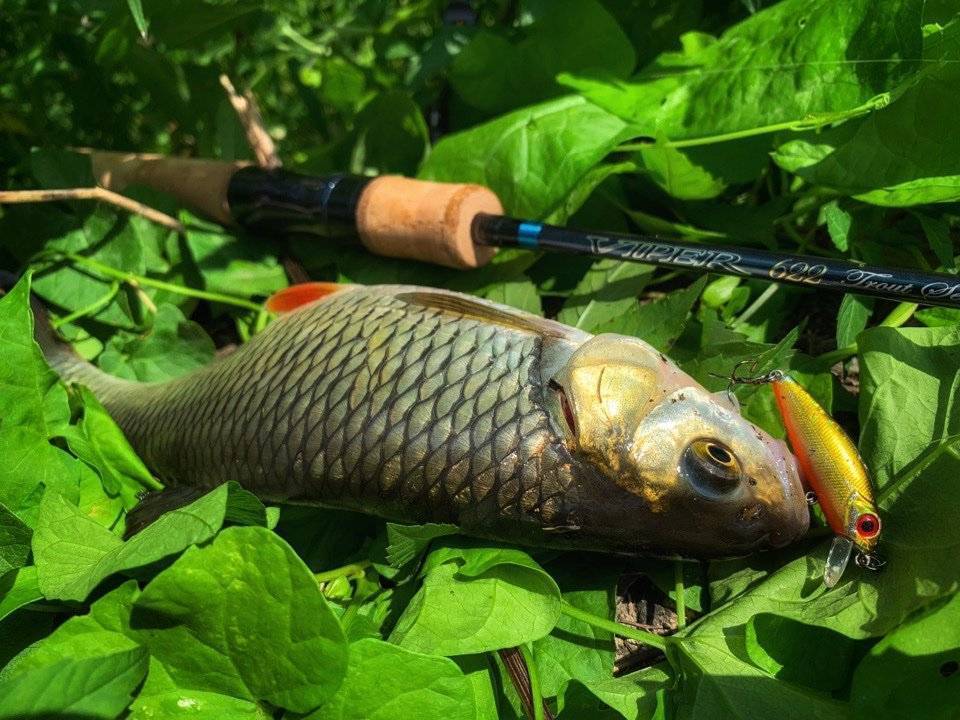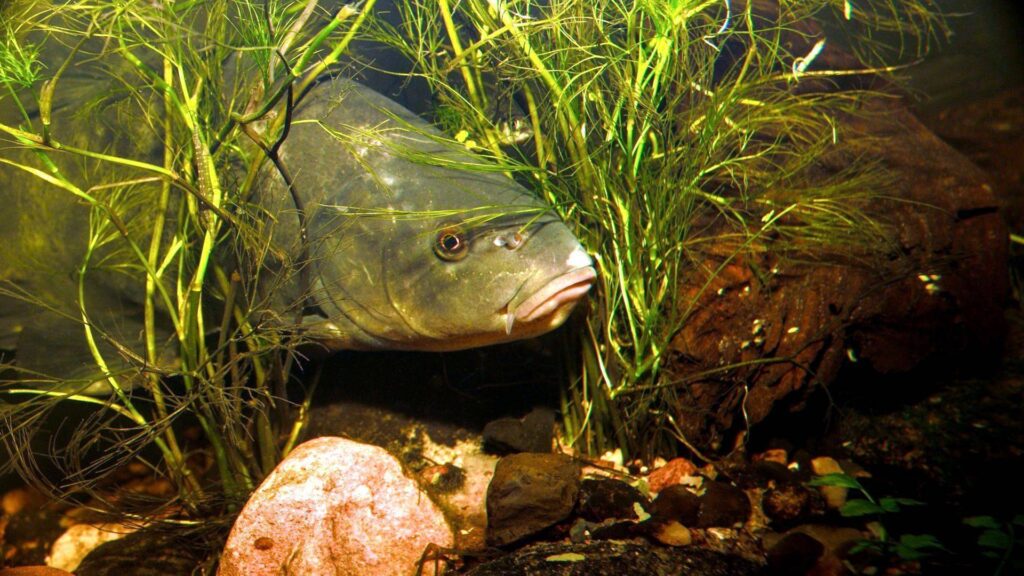Starki is a medium-sized fish from the perch family. With its elongated body shape, it looks like a pike, resembles a perch with transverse stripes on the sides, has two fangs on the lower and upper jaws, which earned it the nickname wolf from anglers. Starfish is one of the most popular fish caught in Lithuania. Starkey meat is considered dietary due to its high protein content and low fat content. Starch is used in many different dishes. Let's take a closer look at this fish.
What does a starling look like?
The starling has a slender, elongated body with slightly compressed sides, which is covered with fine and hard scales that reliably protect the starling's body from all kinds of injuries and the teeth of other predators. the starling's head length is greater than or equal to its body height. The jaw has an elongated, pointed, conical snout.
The gill covers consist of three pairs. This arrangement of the gill covers provides the starling with a reliable system for opening and closing the gill slits. Between the rays of the dorsal fin stretched membrane with dark spots. The dorsal fin of a starfish, when expanded, resembles the dorsal fin of a bass and is not inferior to it in its stiffness. The tail fin is symmetrical with a powerful blade; the size and power of the tail fin allows the jaw to develop a high speed.
The paired pectoral and ventral fins are located on the lower part of the body, and the anal fin is located under the tail. All these fins have sharp spines that reliably protect the starling from enemies. The color of the fins is gray with a dirty yellowish tint.
The body color of starlings living in different bodies of water varies greatly. Most starlings have a grayish-olive body color, with 8-12 dark brown stripes on the sides and a grayish-white belly with slight yellowing. A common starling is a pale straw-yellow scale color with very faint light brown stripes that look more like spots than stripes.
In deep water, where the water is cold, the bottom is dark and there is no sunlight, starlings are darker in color. The back is almost uniformly black, the sides are dark brown, on which the dark stripes are barely distinguishable.
Vision and sensory organs
Vision is the starling's main system for perceiving the world around it. Starkey has large eyes that are round, convex with a brown iris. Stark's eyes are well adapted to see his surroundings at dusk and at night. Starkey's eyes have a special vascular layer, the tapetum behind the retina, which consists of flat cells filled with light-reflecting organic matter.
Such a device increases the sensitivity of the sterk's vision, allows you to see in low light, and, thanks to the tape, the sterk's eyes glow in the dark. Thanks to its vision, the starling can see well in the dark, but does not like bright sunlight and does not distinguish colors.
An important sensory organ of the starling is the lateral line organ, which allows it to pick up the slightest fluctuations in the water and accurately determine the distance and direction from the source of these fluctuations. The lateral line starts from the gill covers and goes all the way through the body, all the way to the tail, it is a channel with sensitive cells, which is connected to the outside world by small holes. The importance of the lateral line is evidenced by the fact that a starling that has completely lost its vision is able to survive by relying only on information from the lateral line.
Starkey has a well-developed sense of smell. In front of the head, under each eye, the jaws have two holes, these are the nostrils, from which the internal olfactory organs enter.
Starkey has good hearing, he can hear sounds on the shore of the pond, for example, human footsteps. Sound is transmitted through the bones of the skull to the right and left auditory sensors.
The starfish, like other fish, has a taste organ with sensitive cells located in the mouth, and a touch organ with sensitive cells located throughout the fish's body.
Age and size
Starki is the largest fish of the perch family. Under favorable conditions, the starling can grow up to 140 cm in length and weigh up to 15-18 kg. The maximum lifespan is 14-15 years. But fish of this size are extremely rare, specimens weighing from 4 kg are already considered a very good trophy.
Lifestyle
The starfish likes large areas of water and is very demanding about water cleanliness and oxygen content, so it avoids ponds with stagnant water where there is no current. The main condition for being in a reservoir is the presence of clean running water, in those reservoirs where there is no running water and there are no springs or springs flowing into the reservoir, there will be no or very few starlings.
Starki prefers to live in large rivers, they choose places with a stony or sandy bottom. In rivers, pike prefer to stay in deep places: holes, eddies. Starkey likes to stay in places where there is a sharp change in depth, in the so-called overfalls, in the bed and near the edges. Likes to be among fallen trees, stumps and bushes.
Small starlings often stand in shallow areas. For hunting in the evenings and mornings, they go to the shallow stretches of the river where they hunt small fish. Starkis can live not only in rivers, but also in large and deep lakes and reservoirs with running water. Here it also sticks to the deepest places, sections of the flooded bed, former ravines, deep pits. Both in rivers and reservoirs, starlings like to hide in unnatural shelters formed at the bottom of the reservoir, it can be sunken boats, reinforced concrete piles, collapsed bridge structures, etc.
What does a starling eat?
Starkey is a typical predator. Zooplankton is eaten only by the born larvae of dung beetles: cyclops, insect larvae and invertebrates. After reaching a size of 20-30 mm, the starling begins to feed on larvae and the smallest fry of other fish. When they grow up to 500 grams, they eat mainly small fish. Adults of any size, up to trophy specimens, prefer to eat small narrow-shaped fish 8-9 cm long.
After catching and swallowing the prey, the starling stands in the shelter, near the stone, and waits for the swallowed prey to be digested, only after that it resumes the hunt. The starfish swallows its prey very carefully, because an uncalculated or incorrectly swallowed prey can get stuck in its narrow throat.
An adult starling's appetite surpasses even pike and perch, under favorable conditions can grow up to 1 kg in weight in 2 years. To increase the mass by 1 kg, a starling needs to eat about 3.5 kg of fish.
Reproduction
The starfish reaches puberty and begins to participate in spawning at the age of 4-5 years. Females mature a little earlier, males a little later. Starlings living in colder conditions ripen after 1.5-2 years.
For spawning, the starling usually chooses shallow water areas that warm up well, these are usually sandy, stony bottoms. The depth in the spawning area can be from half a meter to six meters.
During spawning, the male builds a nest on the bottom, cleaning the place of future egg laying from mud with his belly and fins. Then the female approaches the nest, she lowers her head and raises her tail, taking an almost vertical position and releasing the eggs. The female stimulates the release of eggs by swinging her tail. The male circles the female and secretes milk. The eggs that enter the nest have time to fertilize.
The roe is about 1-1.5 mm in diameter and has a yellowish tint. One female, depending on her size, lays from 100 to 300 thousand eggs. The eggshell is sticky, so they are firmly glued together and held firmly in the nest.
The male, unlike the female, stays at the nest and protects future offspring. With its fins, it increases the circulation of water around the laid eggs, thus ensuring the supply of oxygen. After the death of the male guarding the nest, his place is taken by another male, who guards the nest in place of the deceased. The male guarding the nest is very aggressive towards other fish. Spreading its fins and protruding gill covers, the male jaws attack the enemy. The starling guards the nest for 1.5-2 weeks until the larvae emerge from the laid eggs.
The fry grow very quickly, at the age of 1.5 months they already reach 7-8 cm, and in autumn they are already 14-17 cm long.
How to catch a starling
Spinning is one of the most popular sports methods of capture, since fishing is usually carried out at a suitable depth, away from the shore, it is advisable to use a boat for spinning. Some anglers fish from shore, piers, dikes, bridges or steep bluffs, but fishing from a boat is much better. When catching starlings on spinning, various spinning lures are used: however, starlings catch best on a jig.
When catching on spinning, you need to make a strong hook so that the hook can penetrate the starling's hard mouth.
A very popular method of catching is bottom fishing. With this gear, starlings can be caught throughout the open water season. For fishing, they use a simple bottom rod with a load of 100-150 grams. A half-cut fish is put on the hook.
No matter how you catch starlings, the best time for fishing starts at sunset. During the day, the starling is much worse. It is in the morning and evening hours that the starling approaches shallow water areas, closer to the coast for hunting.
Starkey in cooking
Stark meat is considered a valuable dietary product due to its high protein content (18.4 grams of protein per 100 grams) and low fat content (1.1 grams of fat per 100 grams). The protein content of meat exceeds 18%, it contains 20 amino acids, 8 of which are essential. In addition, meat contains many different mineral elements necessary for the normal functioning of the human body. Stark meat is especially rich in phosphorus, potassium, iodine, molybdenum and manganese.
Starkis is made in all possible ways. Fish can be boiled, fried, smoked and even dried.
